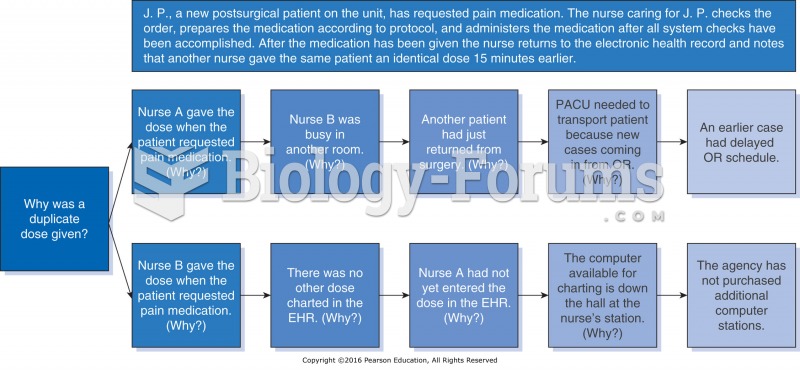Answer to Question 1
Correct Answer: 2
Rationale 1: Drug toxicity must first be ruled out.
Rationale 2: Tinnitus can be an early sign of hearing loss as an adverse effect of potassium-sparing drugs, which is more common with IV administration of ethacrynic acid (Edecrin).
Rationale 3: Questioning the client about recent history of hearing loss is important but is not the priority intervention.
Rationale 4: Hearing loss is unrelated to dehydration.
Global Rationale: Tinnitus can be an early sign of hearing loss as an adverse effect of potassium-sparing drugs, which is more common with IV administration of ethacrynic acid (Edecrin). Drug toxicity must first be ruled out prior to scheduling a hearing screening. Questioning the client about recent history of hearing loss is important but is not the priority intervention. Hearing loss is unrelated to dehydration.
Answer to Question 2
Correct Answer: 2
Rationale 1: Intravenous furosemide (Lasix) causes rapid and profuse diuresis, and an accurate measurement of urine output following administration of this drug is necessary to evaluate the client's response to the drug. It is not necessary to measure urine output prior to administering the medication.
Rationale 2: Furosemide (Lasix) can cause a decrease in serum potassium and precipitate cardiac dysrhythmias.
Rationale 3: There is no reason to do a focused assessment of the gastrointestinal system. A focused assessment of the respiratory system would be more appropriate due to the fluid retention.
Rationale 4: Body positioning does not inhibit a therapeutic effect or prevent adverse effects of furosemide (Lasix), and raising the head of the bed promotes comfort for a client with pulmonary edema.
Global Rationale: Furosemide (Lasix) can cause a decrease in serum potassium and precipitate cardiac dysrhythmias. Intravenous furosemide (Lasix) causes rapid and profuse diuresis, and an accurate measurement of urine output following administration of this drug is necessary to evaluate the client's response to the drug. It is not necessary to measure urine output prior to administering the medication. There is no reason to do a focused assessment of the gastrointestinal system. A focused assessment of the respiratory system would be more appropriate due to the fluid retention. Body positioning does not inhibit a therapeutic effect or prevent adverse effects of furosemide (Lasix), and raising the head of the bed promotes comfort for a client with pulmonary edema.






